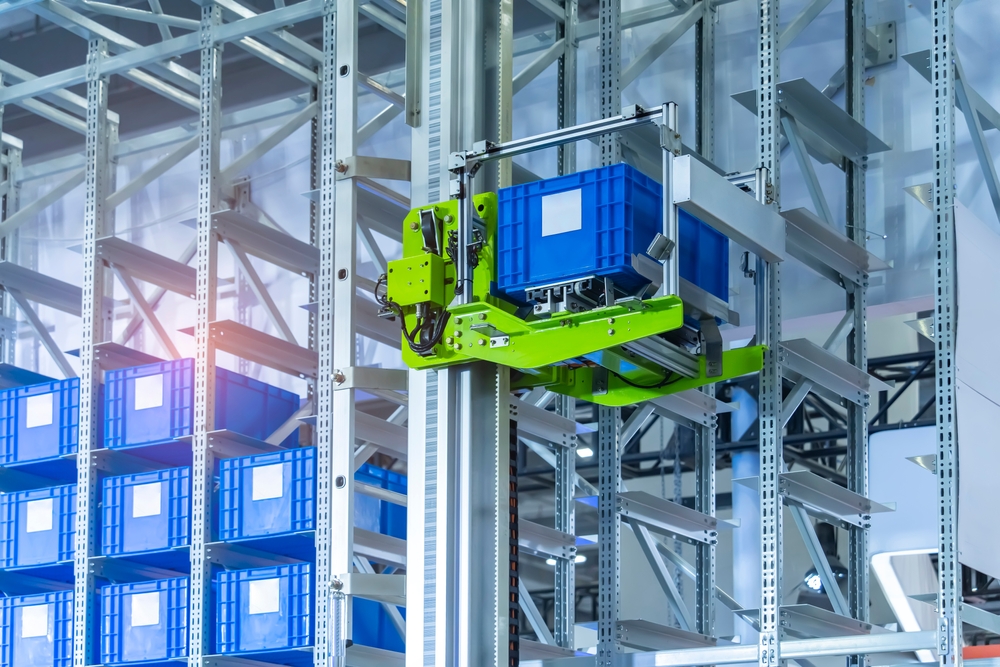Discover the essential strategies and technologies for optimizing order picking in your distribution operations. Enhance efficiency, accuracy, and customer satisfaction in your warehouse.
Order picking is a critical process in the world of distribution, especially for convenience store distributors who must handle a diverse range of products swiftly and accurately. Efficient order picking ensures that convenience stores remain stocked with essential items, from snacks and beverages to candy and tobacco products, ultimately keeping customers satisfied.
This guide aims to provide a comprehensive overview of order picking, exploring various methods, technologies, best practices, and future trends. Whether you’re a seasoned professional or new to the field, this guide will help you optimize your order picking processes for efficiency and accuracy.
In this guide, we will cover:
- Understanding Order Picking: The fundamentals of order picking, its importance, and its role in the supply chain.
- Methods of Order Picking: An overview of different order picking methods and their pros and cons.
- Order Picking Technologies: A look at various technologies that can enhance the picking process.
- Factors to Consider When Choosing Order Picking Methods: Key considerations for selecting the right method for your business.
- Integration with ERP Systems: How to seamlessly integrate order picking technologies with ERP systems.
- Best Practices for Efficient Order Picking: Tips and strategies to improve efficiency and accuracy.
- Measuring and Improving Order Picking Performance: How to track performance and continuously improve.
- Future Trends in Order Picking: Emerging technologies and trends shaping the future of order picking.
Efficient order picking is essential for maintaining smooth operations and ensuring customer satisfaction. By understanding the various methods, technologies, and best practices, you can optimize your picking processes and stay ahead in the competitive world of distribution.
Understanding Order Picking
Order picking is the process of selecting items from a warehouse to fulfill customer orders. It’s a fundamental part of the supply chain that directly impacts customer satisfaction, operational efficiency, and overall profitability. Efficient order picking ensures that convenience stores remain stocked with the products customers need daily, including snacks, beverages, candy, and tobacco.
Key Objectives and Benefits
- Accuracy: Ensuring the correct items are picked reduces errors and returns, enhancing customer satisfaction.
- Speed: Faster picking processes lead to quicker order fulfillment, which keeps customers happy and boosts loyalty.
- Efficiency: Streamlined operations lower costs and improve productivity, leading to better profitability.
Order picking is crucial because it directly influences the customer’s experience. Imagine a convenience store running out of popular items like beverages or snacks. This can lead to customer frustration and lost sales. By maintaining high accuracy and speed in order picking, distributors can ensure that shelves are always stocked, thereby meeting customer expectations.

Methods of Order Picking
There are several methods of order picking, each with its own advantages and best use cases. Here’s a detailed overview:
Piece Picking
In piece picking, workers pick one order at a time, selecting items directly from storage locations. This method is straightforward and ideal for smaller operations with a low volume of orders. However, it can be time-consuming for larger operations.
- Pros: Simple to implement, low initial cost, highly flexible.
- Cons: Time-consuming for large orders, higher labor costs, less efficient for high-volume operations.
Batch Picking
Batch picking involves picking multiple orders simultaneously. Workers collect items for several orders in one trip, reducing travel time within the warehouse. This method is efficient for operations with high order volumes and similar items across orders.
- Pros: Reduces travel time, increases efficiency for high-volume orders.
- Cons: Can be complex to manage, potential for order mix-ups if not handled correctly.
Zone Picking
In zone picking, the warehouse is divided into zones, and workers are assigned to specific zones. Each worker picks items from their zone for multiple orders, and the items are later consolidated. This method reduces worker movement and can improve efficiency.
- Pros: Reduces worker movement, increases specialization and efficiency.
- Cons: Requires effective coordination for order consolidation, initial setup can be complex.
Wave Picking
Wave picking combines elements of batch and zone picking. Orders are picked in waves at scheduled times, allowing for better coordination with shipping schedules and minimizing bottlenecks. It’s suitable for large operations with complex logistics.
- Pros: Synchronizes with shipping schedules, reduces bottlenecks.
- Cons: Requires sophisticated planning and management, can be disruptive if not well-coordinated.
Choosing the Right Method
Selecting the right order picking method depends on several factors:
- Business Size and Volume: Larger businesses with high order volumes might benefit from batch or wave picking, while smaller operations may find piece picking more suitable.
- Product Type and Variability: The nature of your products (size, shape, and handling requirements) can influence the choice of picking method.
- Warehouse Layout and Design: Efficient picking requires an optimized warehouse layout. Consider the flow of goods and worker movement when choosing a picking method.
- Labor Availability and Skills: The skills and availability of your workforce play a crucial role. Some methods require more training than others.
- Scalability and Future Growth: Choose methods that can scale with your business and accommodate future growth.
- Cost Considerations: Budget constraints will influence your choices. Balance cost with the potential efficiency gains of each method.
Practical Examples
- Piece Picking in Small Warehouses: A small distributor handling a variety of unique items may find piece picking ideal due to its simplicity and low cost.
- Batch Picking for High-Volume Orders: A distributor with a high volume of similar products can benefit from batch picking, which reduces travel time and increases efficiency.
- Zone Picking for Specialized Items: A large warehouse with diverse product zones can use zone picking to reduce worker movement and enhance specialization.

Order Picking Technologies
Advancements in technology have revolutionized order picking, offering various tools to enhance efficiency and accuracy. Here’s an in-depth look at the most common technologies:
Paper-Based Picking
Traditional but still in use, paper-based picking involves workers using printed pick lists. It’s simple but prone to errors and slower compared to modern methods.
- Pros: Low cost, easy to implement.
- Cons: High error rates, slower process, difficult to scale.
Despite its drawbacks, paper-based picking remains prevalent in smaller warehouses or those with limited budgets. However, as order volumes increase, the inefficiencies and error rates of paper-based systems become more apparent.
Read our guide: Warehouse Order Picking Technology: How to Choose the Right System
RF Handheld Picking
Radio Frequency (RF) handheld devices, also called barcode scanners, guide workers through the picking process, providing real-time updates and reducing errors. These devices are widely used due to their balance of cost and efficiency.
- Pros: Improved accuracy, real-time updates, increased efficiency.
- Cons: Initial investment in devices, training required.
RF barcode scanners are particularly useful in medium to large warehouses, where real-time data can significantly improve accuracy and speed. Workers use handheld scanners to confirm each pick, ensuring that the correct items are selected.
Voice Picking
Voice picking systems use voice commands to direct workers, allowing for hands-free operation. This method improves speed and accuracy and is especially useful in environments where workers need to handle items frequently.
- Pros: Hands-free operation, increased speed, higher accuracy.
- Cons: Requires investment in voice-picking systems, initial training needed.
Voice picking systems are ideal for high-volume warehouses with fast-moving items. Workers wear headsets and receive instructions through voice commands, which leaves their hands free to pick items efficiently.
Hands-Free Scan Picking
Using wearable scanners, workers can pick items without having to handle scanning devices. This technology improves efficiency and reduces pick times.
- Pros: Increased efficiency, hands-free operation, reduced pick times.
- Cons: Higher initial cost, requires worker adaptation.
Hands-free scan picking is especially beneficial in environments where speed is critical. Wearable scanners, such as those worn on the wrist, allow workers to scan items quickly without interrupting their workflow.
Pick-to-Light and Put-to-Light Systems
These systems use lights to indicate picking locations, reducing search time and improving accuracy. They are highly effective in fast-paced environments.
- Pros: High accuracy, reduced search time, easy to use.
- Cons: High implementation cost, not suitable for all types of products.
Pick-to-light systems are commonly used in environments with high SKU counts and rapid order turnover. Lights guide workers to the correct picking locations, minimizing the time spent searching for items.
Automated Storage and Retrieval Systems (ASRS)
ASRS automates the picking process using robotics and conveyor systems. While expensive to implement, they offer unmatched efficiency and accuracy for large operations.
- Pros: Maximum efficiency, very high accuracy, reduced labor costs.
- Cons: Very high initial investment, complex to implement, requires maintenance.
ASRS is the pinnacle of order picking technology, suitable for very large warehouses with high throughput requirements. These systems can store and retrieve items with minimal human intervention, drastically reducing picking times and errors.
Comparison of Technologies
Choosing the right technology depends on your specific needs, budget, and warehouse setup. Each technology offers unique benefits, and understanding these can help you make an informed decision.

Factors to Consider When Choosing Order Picking Methods
Selecting the right order picking method involves considering various factors:
Business Size and Volume
Larger businesses with high order volumes might benefit from batch or wave picking, while smaller operations may find piece picking more suitable. For instance, a large distributor handling thousands of orders daily would find batch or wave picking more efficient, whereas a small distributor with fewer orders might prefer the simplicity of piece picking.
Product Type and Variability
The nature of your products (size, shape, and handling requirements) can influence the choice of picking method and technology. For example, delicate or perishable items may require more careful handling, making certain methods or technologies more appropriate.
Warehouse Layout and Design
Efficient picking requires an optimized warehouse layout. Consider the flow of goods and worker movement when choosing a picking method. A well-designed layout minimizes travel time and reduces the risk of bottlenecks, improving overall efficiency.
Labor Availability and Skills
The skills and availability of your workforce play a crucial role. Some methods and technologies require more training than others. For example, implementing voice picking systems might require significant training, but the long-term benefits in efficiency and accuracy can outweigh the initial investment.
Scalability and Future Growth
Choose methods and technologies that can scale with your business and accommodate future growth. As your business expands, your order picking system should be able to handle increased volumes without compromising efficiency.
Cost Considerations and Budget Constraints
Budget constraints will influence your choices. Balance cost with the potential efficiency gains of each method and technology. Investing in advanced technologies like ASRS can be expensive, but the long-term savings in labor costs and increased efficiency can justify the investment.
Practical Examples
- Small Businesses: A small distributor with a limited budget might start with paper-based picking but gradually transition to RF handheld devices as they grow.
- Growing Businesses: A medium-sized distributor planning for future growth might invest in a voice picking or hands-free system to improve accuracy and efficiency.
- Large Operations: A large distributor with high order volumes might implement ASRS to maximize efficiency and reduce labor costs.
Integration with ERP Systems
Integrating your order picking methods and technologies with ERP systems can significantly enhance efficiency and accuracy. ERP (Enterprise Resource Planning) systems help streamline various business processes by integrating different functions into a single system. Here’s how integration can benefit your order picking processes:
Importance of Integration
A seamless integration ensures real-time data flow, improving inventory management, order accuracy, and customer satisfaction. For example, when an order is placed, the ERP system can automatically update inventory levels and trigger the order picking process, ensuring that items are picked and shipped quickly.
Integration Processes
Understanding the basics of integrating different picking technologies with your ERP system is crucial. This includes ensuring software compatibility, data synchronization, and effective communication between systems. Here are some steps to consider:
- Assess Compatibility: Ensure that your order picking technologies are compatible with your ERP system.
- Data Synchronization: Set up real-time data synchronization to keep inventory levels and order statuses updated.
- Custom Integration Solutions: Consider working with integration specialists to develop custom solutions that meet your specific needs.
Benefits of Seamless Integration
- Real-Time Inventory Updates: Immediate updates to inventory levels reduce the risk of stockouts and overstock situations.
- Reduced Manual Data Entry: Automation minimizes the need for manual data entry, reducing errors and freeing up staff for more strategic tasks.
- Enhanced Order Accuracy: Accurate data flow between systems ensures that orders are picked and fulfilled correctly.
- Improved Reporting and Analytics: Integrated systems provide better visibility into operations, enabling more informed decision-making.
Common Challenges
Integration can be complex and may require overcoming challenges such as data compatibility and system downtime. Here are some common challenges and solutions:
- Data Compatibility: Ensure that data formats are compatible between systems or use middleware to facilitate data translation.
- System Downtime: Plan for integration during low-activity periods to minimize disruptions to operations.
- User Training: Provide comprehensive training for staff to ensure they are comfortable with the new integrated system.

Introducing DAC ERP by CDR Software
Efficient order picking is crucial for maintaining smooth operations and ensuring customer satisfaction. Integrating a robust ERP system can significantly enhance your order picking processes. CDR Software’s DAC ERP is designed to streamline and optimize distribution operations, making it an ideal solution for convenience store distributors, especially those dealing with a variety of products including candy, snacks, and tobacco.
Key Features of DAC ERP
- Real-Time Inventory Management: DAC ERP provides real-time updates on inventory levels, ensuring you always know what’s in stock. This feature helps prevent stockouts and overstock situations, enhancing order accuracy and customer satisfaction.
- Seamless Integration with Picking Technologies: Whether you use RF handheld devices, voice picking systems, or automated storage and retrieval systems (ASRS), DAC ERP integrates seamlessly with various order picking technologies, ensuring efficient coordination between different systems.
- Advanced Reporting and Analytics: Gain access to advanced reporting and analytics tools with DAC ERP. Monitor key performance indicators (KPIs) such as pick rate, accuracy rate, and order lead time to identify areas for improvement and make data-driven decisions.
- Scalability for Future Growth: As your business grows, DAC ERP scales with you. Its flexible design accommodates increasing order volumes and expanding operations, ensuring your order picking processes remain efficient.
- Enhanced Order Accuracy: DAC ERP minimizes manual data entry and errors by automating key processes. Accurate data flow between systems ensures orders are picked correctly, reducing returns and enhancing customer satisfaction.
- User-Friendly Interface: The intuitive and user-friendly interface of DAC ERP makes it easy for your team to adopt and use. Comprehensive training and support are provided to ensure a smooth transition and ongoing success.
Benefits of Using DAC ERP
- Increased Efficiency: Streamlined operations and real-time data synchronization lead to faster order picking and fulfillment.
- Improved Accuracy: Automated processes and seamless integration reduce errors and ensure the right items are picked every time.
- Better Decision-Making: Advanced analytics and reporting provide insights into your operations, helping you identify areas for improvement and make informed decisions.
- Scalability: DAC ERP grows with your business, ensuring your order picking processes remain efficient even as your operations expand.
By implementing DAC ERP from CDR Software, you can optimize your order picking processes, improve efficiency, and ensure your convenience store distribution operations run smoothly.
For more information on how DAC ERP can benefit your business, contact us today.
Best Practices for Efficient Order Picking
Implementing best practices can dramatically improve your order picking process. Here are some strategies to consider:
Training and Skill Development
Invest in training programs to ensure your workforce is skilled and efficient. Well-trained employees are more likely to perform tasks accurately and quickly. Consider ongoing training sessions to keep staff updated on new technologies and processes.
Use of Automation and Robotics
Incorporate automation to reduce manual labor and increase accuracy. Technologies like ASRS and conveyor systems can significantly speed up the picking process and reduce errors.
Layout Optimization and Ergonomic Considerations
Design your warehouse layout for optimal flow. Arrange items logically to minimize travel time and reduce worker fatigue through ergonomic practices. For instance, place high-demand items closer to the packing area to speed up the picking process.
Inventory Management Techniques
Implement effective inventory management techniques to streamline picking. Techniques like ABC analysis (categorizing items based on importance and usage rates) can help prioritize which items to pick first and where to store them.
Real-Time Data and Analytics
Use real-time data and analytics to continuously monitor and improve your processes. Track key metrics such as pick rates, accuracy rates, and order lead times to identify areas for improvement.
Reducing Picking Errors
Implement strategies to minimize picking errors, such as double-checking orders and using technology aids like barcode scanners and voice picking systems. Regularly review error rates and address any underlying issues promptly.
Practical Examples
- Training Programs: Develop comprehensive training programs that include both classroom and hands-on sessions. Regularly update training materials to reflect new technologies and processes.
- Automation in Action: Implement automated conveyor systems to transport picked items to the packing area, reducing the need for manual handling.
- Ergonomic Layouts: Design workstations that minimize repetitive strain injuries and ensure that frequently picked items are within easy reach.
Measuring and Improving Order Picking Performance
Tracking performance metrics is crucial for continuous improvement. By measuring key performance indicators (KPIs), you can identify areas for improvement and implement strategies to enhance efficiency and accuracy.
Key Performance Indicators (KPIs)
Identify and monitor KPIs such as:
- Pick Rate: The number of items picked per hour or day. A higher pick rate indicates more efficient picking processes.
- Accuracy Rate: The percentage of orders picked correctly. High accuracy rates reduce returns and improve customer satisfaction.
- Order Lead Time: The time taken from order placement to shipment. Shorter lead times indicate a faster and more efficient process.
Measuring Efficiency and Accuracy
Use tools and techniques to measure efficiency and accuracy, such as:
- Barcode Scanners: Track items as they are picked to ensure accuracy.
- RFID Technology: Use RFID tags to monitor inventory and track items throughout the picking process.
- Automated Systems: Implement automated systems to track pick rates and accuracy in real-time.
Benchmarking
Compare your performance against industry standards to gauge your effectiveness. This can help you understand where you stand in comparison to competitors and identify best practices to adopt.
Continuous Improvement Strategies
Implement strategies for ongoing improvement, such as:
- Regular Reviews: Conduct regular performance reviews to identify areas for improvement.
- Feedback Loops: Establish feedback loops with staff to gather insights on challenges and opportunities for improvement.
- Process Adjustments: Make adjustments to processes based on performance data and feedback. This could include reorganizing the warehouse layout, adopting new technologies, or refining training programs.
Practical Examples
- Using KPIs Effectively: Set up dashboards that display real-time KPI data to keep track of performance and quickly identify issues.
- Continuous Improvement in Action: Implement a continuous improvement program where staff are encouraged to suggest process improvements, and successful suggestions are rewarded.

Future Trends in Order Picking
Stay ahead by understanding emerging trends. The future of order picking is being shaped by new technologies and changing customer demands.
Emerging Technologies and Innovations
Explore new technologies such as AI, machine learning, and advanced robotics. These technologies may soon optimize picking routes, improve accuracy, and increase speed. For example:
- AI and Machine Learning: These technologies will be able to analyze data to predict demand, optimize inventory placement, and suggest efficient picking routes.
- Advanced Robotics: Robots can assist with picking tasks, reducing the need for manual labor and increasing accuracy.
Impact of E-commerce
Understand how the rise of e-commerce is reshaping order picking processes. E-commerce has led to an increase in small, frequent orders that require quick and accurate fulfillment. This shift has driven the adoption of technologies like:
- Automated Sortation Systems: These systems can quickly sort items for different orders, reducing the time needed for manual sorting.
- Dynamic Picking Systems: Systems that adapt in real-time to changes in order patterns and inventory levels.
Role of AI and Machine Learning
Learn how AI and machine learning can optimize picking routes and improve accuracy. For instance, AI algorithms can analyze picking patterns to suggest the most efficient routes through the warehouse, reducing travel time and increasing productivity.
Sustainability and Green Logistics
Discover the importance of sustainable practices and how to implement them. Customers and businesses are increasingly prioritizing sustainability, leading to the adoption of:
- Eco-Friendly Packaging: Using recyclable or biodegradable packaging materials.
- Energy-Efficient Equipment: Implementing energy-efficient lighting, heating, and machinery in warehouses.
- Green Transportation: Using electric or hybrid vehicles for order deliveries.
Practical Examples
- AI in Action: Implement an AI-based system that continuously analyzes order patterns and adjusts picking strategies to optimize efficiency.
- Sustainable Practices: Introduce recycling programs for packaging materials and invest in energy-efficient warehouse equipment.
Conclusion
Efficient order picking is essential for maintaining smooth operations and ensuring customer satisfaction. By understanding the various methods, technologies, and best practices, you can optimize your picking processes and stay ahead in the competitive world of distribution. Integrating a robust ERP system like DAC ERP from CDR Software further enhances your capabilities, providing real-time inventory management, seamless technology integration, and advanced analytics to support your growth.
Ready to transform your order picking processes? Contact CDR Software to learn more about how DAC ERP can benefit your business and help you achieve your distribution goals.


